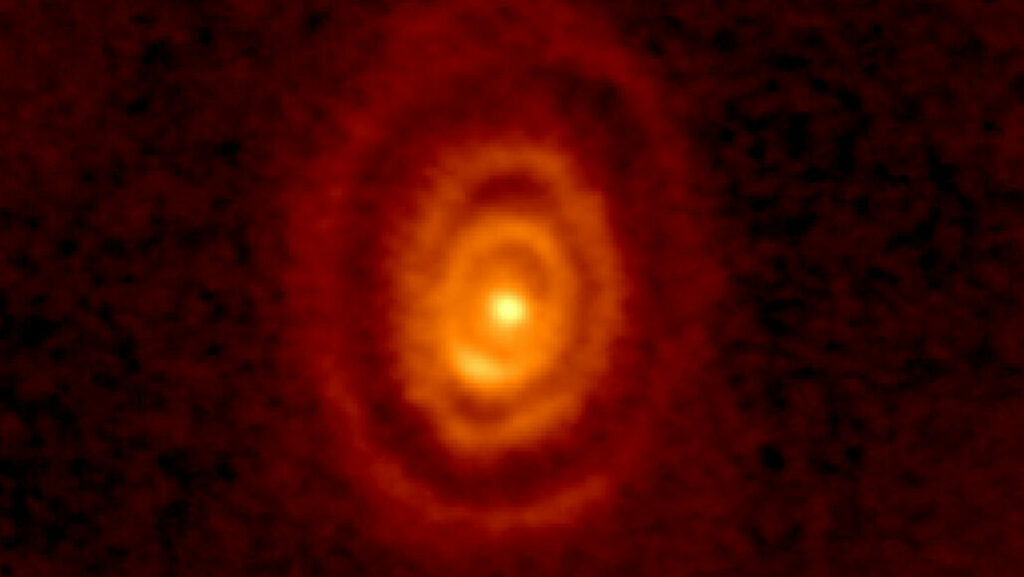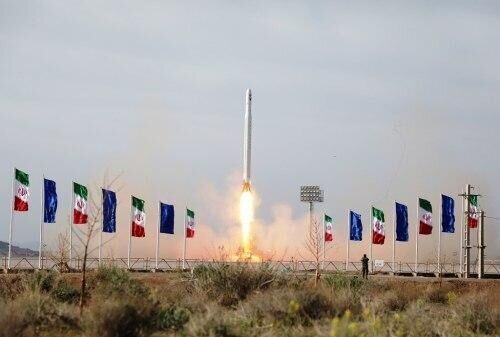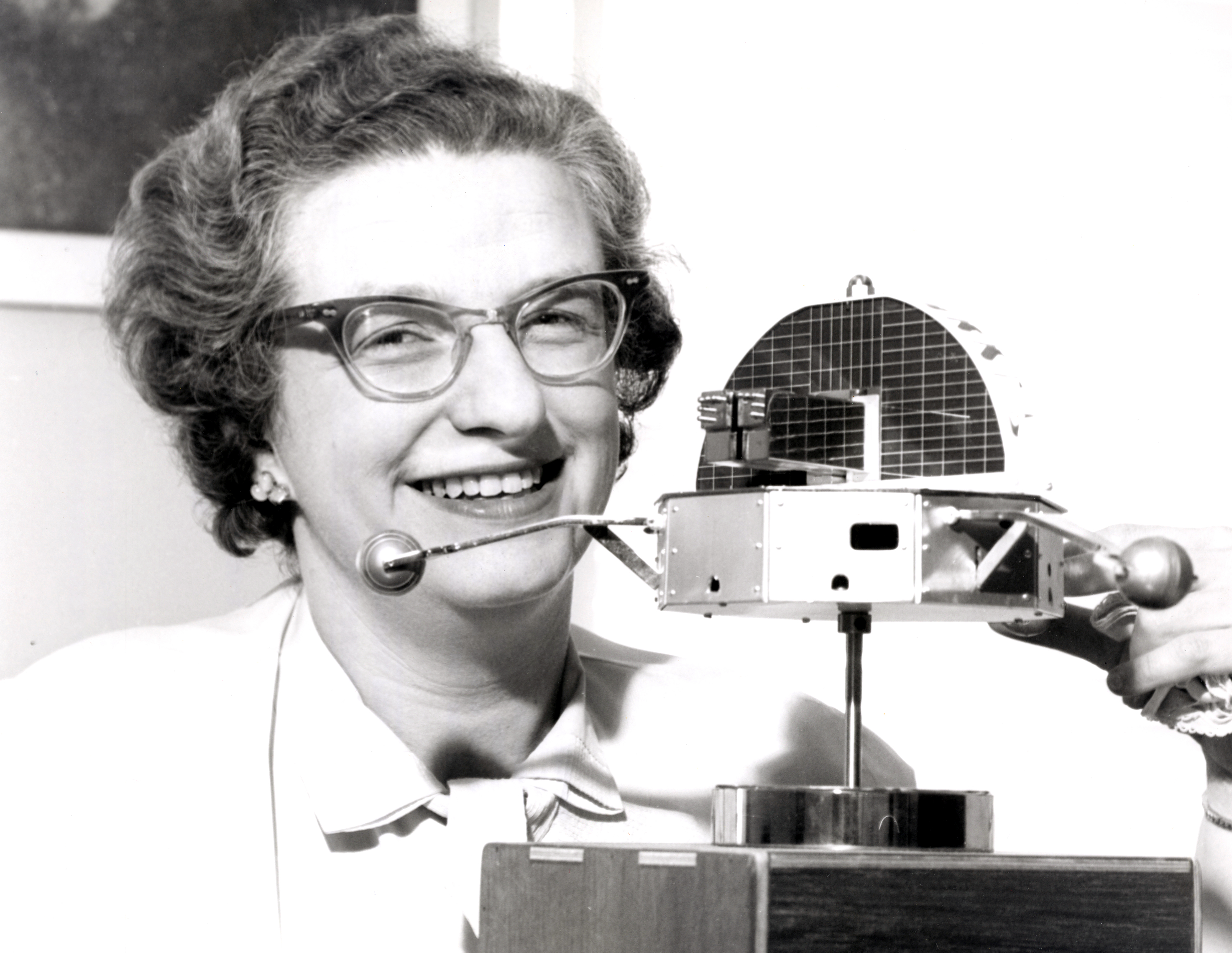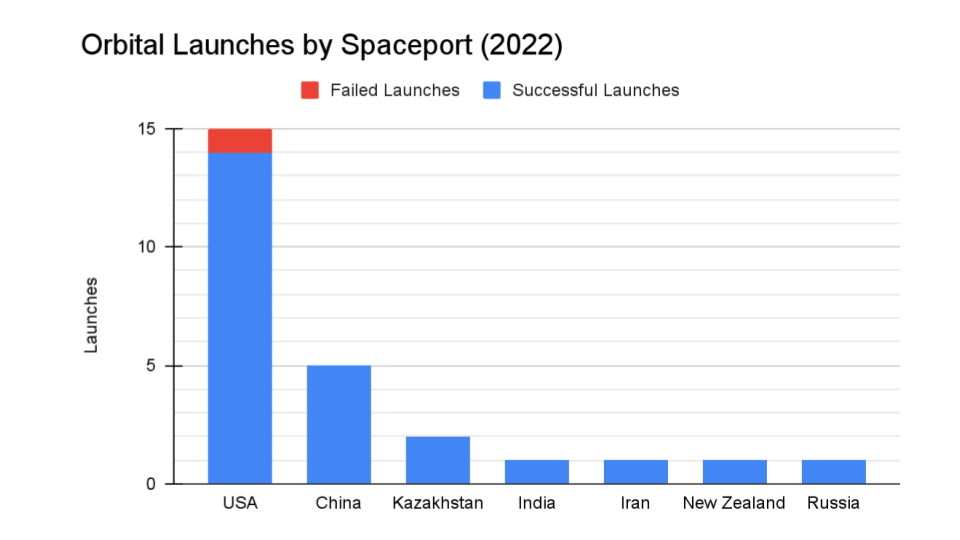The Advanced Camera for Surveys instrument onboard the Hubble Space Telescope is celebrating twenty years of service this week. Plus, a new look at an old lunar rock, gas rings around an aging star, all the rockets from around the world, and this week in rocket history, we look back at the 1962 Orbiting Solar Observatory, led by Nancy Grace Roman.
Podcast
Show Notes
NASA opens up 50-year-old Moon rocks
- NASA press release
- Lunar Rocks and Soils from Apollo Missions (NASA)
Hubble instrument celebrates 20 years of service
- ESA press release
- Hubblesite press release
- NASA press release
Aged star creates rings of lost atmosphere
- A new image captures enormous gas rings encircling an aging red star (Science News)
- “The Rapidly Evolving AGB Star, V Hya: ALMA finds a Multi-Ring Circus with High-Velocity Outflows,” R. Sahai et al., to be published in The Astrophysical Journal (preprint on arxiv.org)
Chinese rocket launches internet satellites
- CASC press release (Chinese)
Iran launches satellite
- IRGC Space Commander: The mission of “Noor 2” satellite is a measurement and information (Tasnim News) (Persian)
Starlinks… again
- Starlink mission page (SpaceX)
NASA launches rocket from Alaska to study aurorae
- NASA press release
- NASA Rocket Team to Chase Pulsating Aurora (NASA)
This Week in Rocket History: OSO-1
- OSO 1 (NASA)
- OSO 1 Experiment Search Results (NASA)
- OSO 1 (NASA GSFC)
- BOOK: Orbiting Solar Observatory Satellite OSO-1 The Project Summary (Scribd)
Transcript
Today, the world of space science is throwing everything at the wall to see what interesting tidbits fall out and what sticks.
We have old rocks, new data, astronomy, planetary, and solar science.
And rockets: rockets from China, Iran, and here in the USA.
If a rocket was poised to leave the planet, it did.
Pretty much. And can we blame them? No, we can’t. And as we watch today’s launches, we also look back at an awesome mission of the past: the 1962 Orbiting Solar Observatory.
All of this now, right here on the Daily Space.
I am your host Dr. Pamela Gay.
And I am your host Beth Johnson.
And we’re here to put science in your brain

NASA astronauts brought back almost 400 kilograms of Moon rocks over the six Apollo lunar landings. Many of the samples were studied at the time, but NASA thought it was a good idea to save some unopened so that scientists in the future could use new techniques and instruments that the 60s engineers could only dream of. A team of scientists is about to open one of these samples — one of the last unopened ones.
The sample is one from Apollo 17, the last lunar landing. It was collected by the astronauts using two tubes hammered into the rock. One of the two tubes from that collection was vacuum sealed while still on the lunar surface, one of only two samples to get this treatment across all the Apollo missions.
This sample was sealed in such a way to preserve the materials which may have been in it because of its temperature. Those materials, known as volatiles, are of interest to scientists planning for the Artemis return to the Moon later in the 2020s. Volatiles include water ice and carbon dioxide. The volatiles will be studied using a mass spectrometer, a device that measures the size of molecules to identify them. Mass spectrometers have become very sensitive in recent years, allowing more precise data from these 50-year-old samples. This particular sample analysis project was started over a decade ago, with teams taking the last three years to develop the tools necessary to do it.
The team took the sample out of its outer protective case last month and confirmed that the inner vacuum case was still intact. The process of extracting the gas involves two specialized pieces of equipment — a tool to pierce the case and another tool called a manifold used to extract the gases from inside. The manifold was built by a team from Washington University in St. Louis. The piercing tool was built by a team from the European Space Agency.
The process to extract the gas from the rock sample will take months to complete. After the gas is collected, scientists will analyze the rocks themselves. A team back in 2019 examined the other core taken at the same time but not vacuum sealed. It revealed lots of small grains and rocks.
Just because you have a few decades on you, doesn’t mean you aren’t still useful. Sure, those lunar samples are really billions of years old, but the statement still applies.
Take the Hubble Space Telescope. This amazing space telescope has been going strong for the better part of thirty years, one flawed mirror aside. It’s a Millennial telescope, in fact, and I’m sure that we could make some astute comparisons here, but let’s move on to the real reason we’re talking about this workhorse.

While Hubble is just over thirty, not every instrument has been on the telescope for that long. The Advanced Camera for Surveys (ACS) was installed on March 7, 2002, by astronauts on Hubble Servicing Mission 3B or STS-109. Which makes the ACS twenty years old this week, so happy birthday! Astronaut Mike Massimino was one of the astronauts that helped install the instrument during a spacewalk, and he notes: We knew the ACS would add so much discovery potential to the telescope, but I don’t think anybody really understood everything it could do. It was going to unlock the secrets of the Universe.
The ACS can take images from the ultraviolet, through the visible, and even into the near-infrared. It has three sub-instruments: the Wide Field Channel, the High-Resolution Channel, and the Solar Blind Channel. Each of these is designed to look at different objects, from galaxies and galaxy clusters to weather patterns on Jupiter. And that’s just what the ACS has done for two decades.
One of the more famous images, which we’ll include in our show notes, is the Hubble Ultra Deep Field, released in 2004, that combined the work of the ACS with the Near Infrared Camera and Multi-object Spectrometer or NICMOS and ended up finding galaxies that existed 13 billion years ago. It was a million-second-long exposure that followed up the original Hubble Deep Field images released in 1995.
The ACS was also an important part of the New Horizons mission to Pluto, taking some of the most detailed images in advance of the flyby and helping determine which hemisphere looked best for close-up pictures.
And then there is the gravitational lensing usage, which revealed even more distant galaxies. Per the press release: In 2002, the ACS delivered an unprecedented and dramatic new view of the cosmos when it demonstrated the power of gravitational lensing. The ACS peered straight through the center of one of the most massive galaxy clusters known, Abell 1689. The gravity of the cluster’s trillion stars — plus dark matter — acts as a lens in space two million light-years wide. This gravitational lens bends and magnifies the light of galaxies located far behind it, distorting their shapes and creating multiple images of individual galaxies.
We could go on and on about the amazing discoveries of the ACS, with its ability to peer back to the early universe, just 435 million years after the Big Bang, but that would take up the entire show. Instead, we’ll close this story with a quote from NASA’s Hubble Senior Project Scientist, Jennifer Wiseman, who said: The Advanced Camera for Surveys has opened our eyes to a deep and active universe for two decades. We are anticipating still more discoveries with this camera, in conjunction with Hubble’s other science instruments, for many years to come.
The Hubble Space Telescope is expected and capable of continuing for another decade if not two, and we look forward to sharing what discoveries it and its various instruments continue to make.

And because what is super old can sometimes be new, we round out this segment with the story of an aged star that is blowing off its outer atmosphere.
This is a completely expected phenomenon, and we see the results of this kind of behavior every time we look at a planetary nebula. This particular data set, however, is something totally new to researchers; we have never seen this in the process of happening.
And this is research that shows that context matters.
In the newly published image, we see a bright star in the center of a series of bright rings. Observed with the Atacama Large Millimeter Array (ALMA), it would be easy to misinterpret this image as being just another forming solar system with dust rings likely sheltering planets. But, it’s not. Any planetary rings this system had formed it used up billions of years ago.
Today, there is a red variable star sitting in the center of the system, and for the past 800 years, it has been exhaling layers of its now expanded atmosphere. Each of these layers is now moving away from the star. Thanks to geometry and the ability to measure expansion rates, we know these rings were cast off 270, 485, and 780 years ago.
And unlike in planetary systems where the rings we see are actually rings in a disk, what we see here as a ring is a bit of an optical illusion. The star is expelling shells of material, but just like bubbles often appear as rings, we are only seeing the edges of these spheres.
This particular star, named V Hydrae, is located about 1300 light-years away and is just about double the size of our Sun. In the grand scheme of the universe, this makes them very similar stars, and we can anticipate our own Sun to someday exhale its atmosphere the same way.
Through this mass shedding process, medium-sized stars reduce themselves to a naked core – a cooling-off white dwarf – while making their own unique planetary nebulae. Our systems planetary nebula will someday be shaped by both our Sun and how the material interacts with our planets and other minor bodies.
Hubble was actually justified, in part, as a mission to figure out the mysteries of planetary nebulae. It turns out that they are complicated, and it will take a few more generations of space telescopes to sort their details.
Sadly, not every launch is a space telescope, but I guess that’s ok.
First up, on March 5th at 0601 UTC a Chinese Long March 2C launched six internet satellites for the company Galaxy Aerospace. These satellites aren’t operational and instead are being used for testing as a constellation. The company has previously only launched one satellite into orbit.
Also on the Long March 2C was a remote sensing nanosatellite.

On Tuesday, March 8, Iran launched a satellite called Noor 2 on a Qased launch vehicle from Iran. The U.S. military’s satellite catalog listed it as object 51954 in a roughly 500-kilometer orbit inclined 58 degrees to the equator, providing independent confirmation of launch success. Noor 2 is a successor to the Noor satellite launched in 2020; both are military reconnaissance satellites. Noor 2 is the seventh satellite Iran has successfully placed into orbit using one of its own rockets. Iran has also launched satellites on Russian and Chinese rockets.
And in other news, another batch of Starlink satellites went to orbit aboard a SpaceX Falcon 9 broomstick this morning.
Not all scientific payloads need to spend years in space to collect their data; sometimes they just need a few minutes. That’s where sounding rockets are used.
Aurorae are one of the most visually interesting atmospheric phenomena. There are many different kinds of aurorae, from the normal kind to STEVE to a type called pulsating aurorae.
A pulsating aurora is what it sounds like — an aurora that pulses every few seconds. The reason these aurorae pulsate is unknown, and scientists want to figure out why. The current theory involves chorus waves, a type of electromagnetic wave first noticed by radio operators in World War I because the frequency, when played as audio, sounded like talking. It turns out that these waves have exactly the same frequency as the observed aurora pulses from low-energy electrons. Another observation is that these pulses happen along with X-ray bursts called microbursts, from high-energy electrons.
The experiment launched, called LAMP (Loss through Aurural Microburst Pulsations), will investigate the two energy ranges and determine if both events – the waves and bursts – are caused by the same thing. It launched from the Poker Flats Research Range at 11:27 UTC on a two-stage Black Brant 9 sounding rocket. The LAMP payload flew through the aurora, counting three different levels of electron energy. The payload was recovered under a parachute, and the principal investigator said the data was good.
And from the good data of today, we now turn back the clock to look at the good data of the past.
This Week in Rocket History

This Week in Rocket History is the first dedicated solar astronomy satellite, OSO-1.
Orbiting Solar Observatory 1, also known as OSO-1, was launched on March 7, 1962, on a Thor-Delta rocket, a direct ancestor of the Delta II rocket which was only recently retired in 2018. The roughly 200-kilogram spacecraft was inserted into a circular orbit at 530 by 510 kilometers, inclined 32.8 degrees to the equator.
Before the OSO satellites, which would eventually number eight, the Sun could only be studied indirectly through its effects on the Earth. OSO-1 was the first satellite designed to perform extended observations of the Sun from above the Earth’s atmosphere. The OSO project was led by Nancy Grace Roman who was the new Chief of Astronomy at NASA — the same Nancy Grace Roman for whom an upcoming space telescope has been named.
Observing the Sun directly and comparing it to historic data was hoped to allow for an explanation of its effects on Earth’s atmosphere and also reveal new discoveries on purely solar effects. OSO-1 was the first of eight satellites that would observe the Sun during a complete 11-year solar cycle.
We take it for granted today that satellites have onboard recorders to allow data to be captured and downlinked to a ground station later. In the early 1960s, however, this was not the case. Satellites then could only send back data in real-time while they were over a ground station, which meant that data collected during the parts of the orbit not over a ground station was lost. OSO-1 changed this by being the first satellite to have onboard data tape recorders to store data. This meant that data from parts of the orbit not over a ground station could be downlinked later when it was over a ground station.
OSO-1 was also the first satellite to have a stabilized platform that allowed it to constantly observe the Sun with an accuracy of plus or minus one arc second or 1/60th of a degree.
The satellite had two groups of instruments on it: those that were directly observing the Sun and those that did not need to be pointed at the Sun, such as detectors for gamma rays and other charged particles. The platform holding the instruments not looking at the Sun actually spun at thirty revolutions per minute or once every two seconds.
Another challenge for the satellite was the fact that, because it was observing the Sun, it had heat issues that the engineers solved by using special paints applied to the back of the platform with the solar instruments on it and polishing surfaces on other parts of the spacecraft to allow them to reflect the sunlight rather than absorb it.
Before launch, the satellite was known as OSO-A, but upon reaching orbit, it was given the designation OSO-1, a naming convention that is still used for families of satellites launched by the U.S. government.
Before the tape recorders failed in May 1962, OSO’s spectrometer observed thirty solar flares and measured almost 6,000 spectra. The spacecraft collected high-energy electron flux from space until the Starfish Prime exo-atmospheric (space) nuclear test in July 1962 saturated all but the lowest level of the detectors.
However, the failure of the recorders wasn’t the end of its mission. It continued to return data using real-time downlinks until May 1964, when OSO-1’s batteries finally gave up. Not bad for a spacecraft designed to last only six months. It re-entered the Earth’s atmosphere in 1981.
The success of OSO-1 allowed NASA Goddard’s astronomy team, led by Nancy Grace Roman, to consider more and more advanced space telescopes, starting with the Orbiting Astronomical Observatory series which looked at distant stars, and many others including Hubble and JWST.
Statistics
And now, for some statistics.
The number of toilets in space is still eight, four on the ISS, one on the Soyuz, one on the Crew Dragon, one on Shenzhou 13, and one on Tianhe.

We keep track of orbital launches by launch site, also called spaceport. Here’s that breakdown:
USA 15
China 5
Kazakhstan 2
India 1
Iran 1
New Zealand 1
Russia 1
From those 26 launches, a total of 529 spacecraft were put into orbit.
Your random space fact for this week is that the International Space Station spends approximately 1.2% of its orbit passing over the U.S.
This has been the Daily Space.
You can find more information on all our stories, including images, at DailySpace.org. As always, we’re here thanks to the donations of people like you. If you like our content, please consider joining our Patreon at Patreon.com/CosmoQuestX.
Credits
Written by Pamela Gay, Beth Johnson, and Erik Madaus
Hosted by Pamela Gay, Beth Johnson, and Erik Madaus
Audio and Video Editing by Ally Pelphrey
Content Editing by Beth Johnson
Intro and Outro music by Kevin MacLeod, https://incompetech.com/music/


 We record most shows live, on Twitch. Follow us today to get alerts when we go live.
We record most shows live, on Twitch. Follow us today to get alerts when we go live.